Mini Planter Series: Coit Tower
Instantly get transported to one of the most picturesque cities in the world, San Francisco, with this replica of the infamous Coit Tower. Believed by locals to resemble a fire hose, it was donated to the residents of San Francisco by Lillie Hitchcock Coit, a wealthy socialite who loved to chase fires in the early days of the city's history, when the official Fire Department did not yet exist!
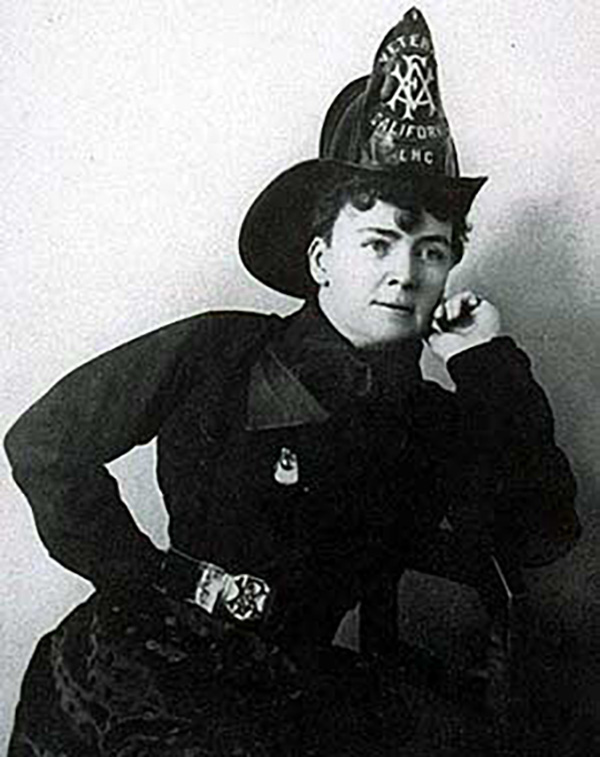
…Fires in the city – which broke out regularly in the wooden buildings – were extinguished by several volunteer fire companies.
Coit was one of the more eccentric characters in the history of North Beach and Telegraph Hill, smoking cigars and wearing trousers long before it was socially acceptable for women to do so. She was an avid gambler and often dressed like a man in order to gamble in the males-only establishments that dotted North Beach.
Coit Tower also represents the work of a master, Arthur Brown Jr. Although the project architect was Henry T. Howard, and much of the work was executed by John A. Baur it is noted that it was Brown who designed its concept, shape, and proportions. It was completed on October 8, 1933, just a few years after Lillie's death. I think she would be happy to see such a monument raised in her honor!
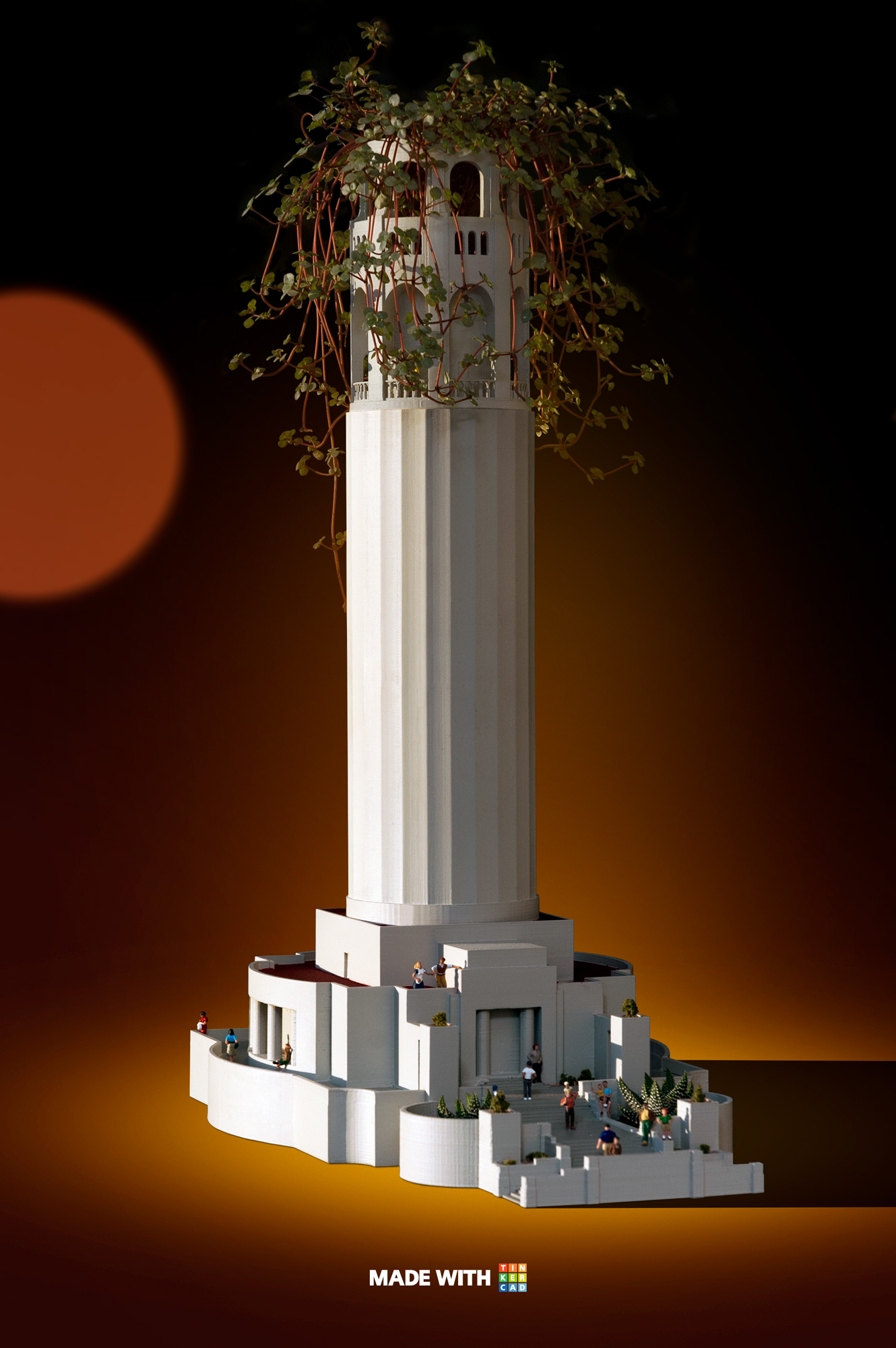
…I'm fascinated by this structure!
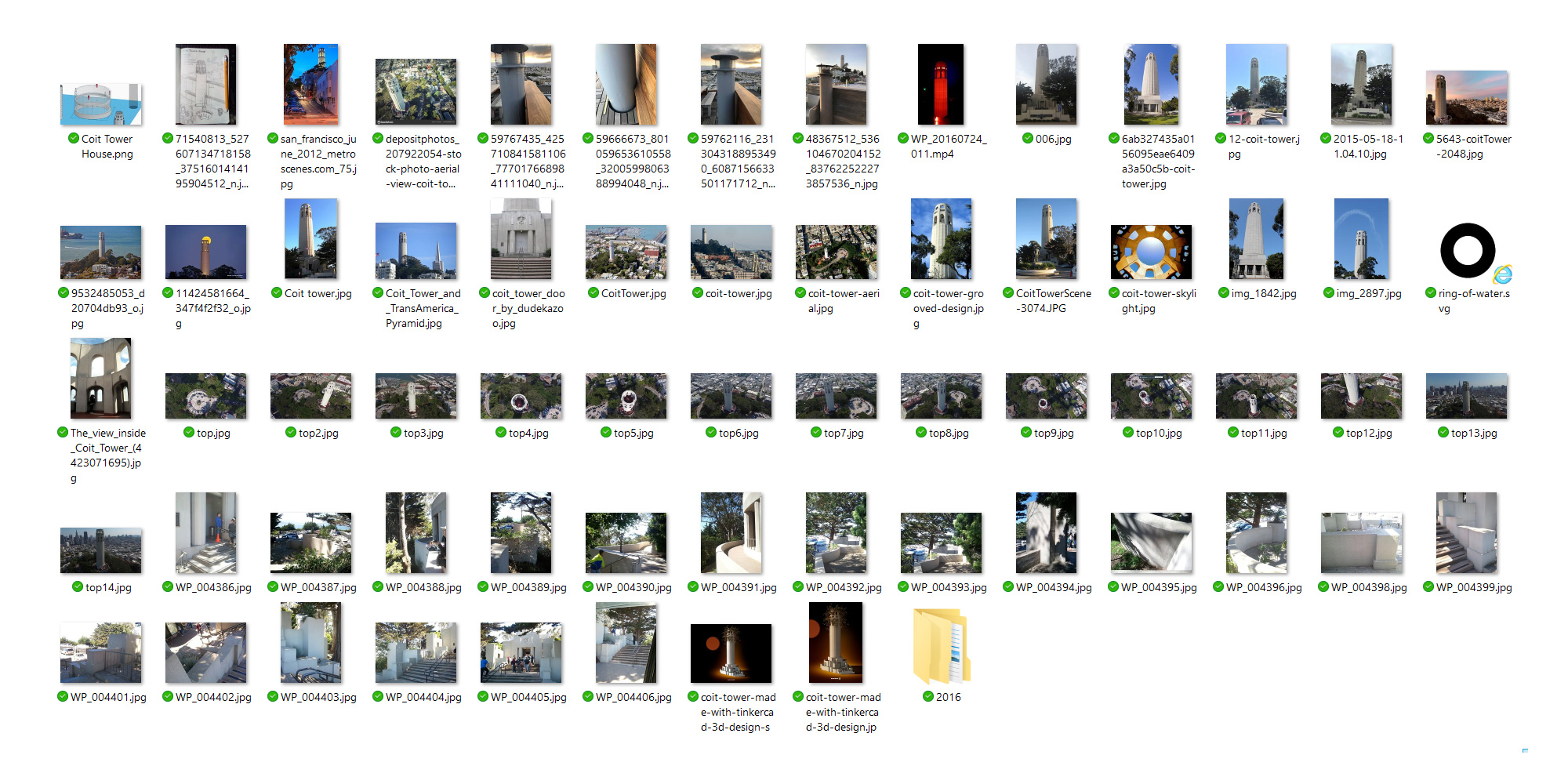
I'm all about unique things – and the story, as well as the design approach and architectural importance of this particular monument are second to none.
Over my career I spent many years working in the Embarcadero area – all had offices in the area: Autodesk, IBM, Microsoft, etc, and so I would always go for a walk in the foothills of Telegraph Hill, with Coit Tower literally towering above my head. I instantly fell in love with its design and knew I had to ‘study it’ further…
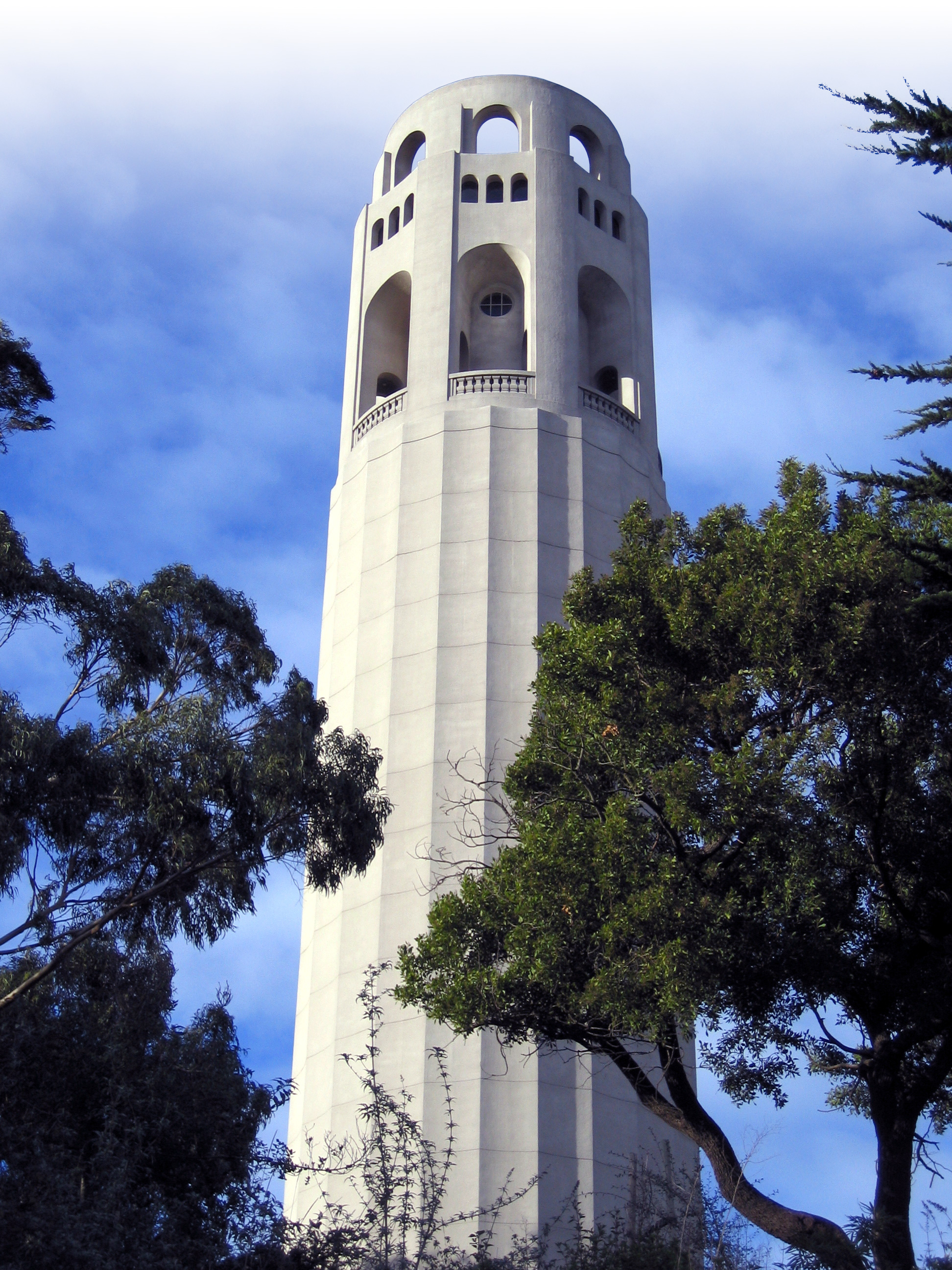
The main tower section is quite beautiful in itself. It is cylindrical in its shape and consists of 24 grooves, centers of which are equally positioned 15° apart.
Upon further examination of Arthur Brown Jr.'s creation, you begin to notice that the whole tower is indeed quite mathematical in its design, especially as it enters the crown.
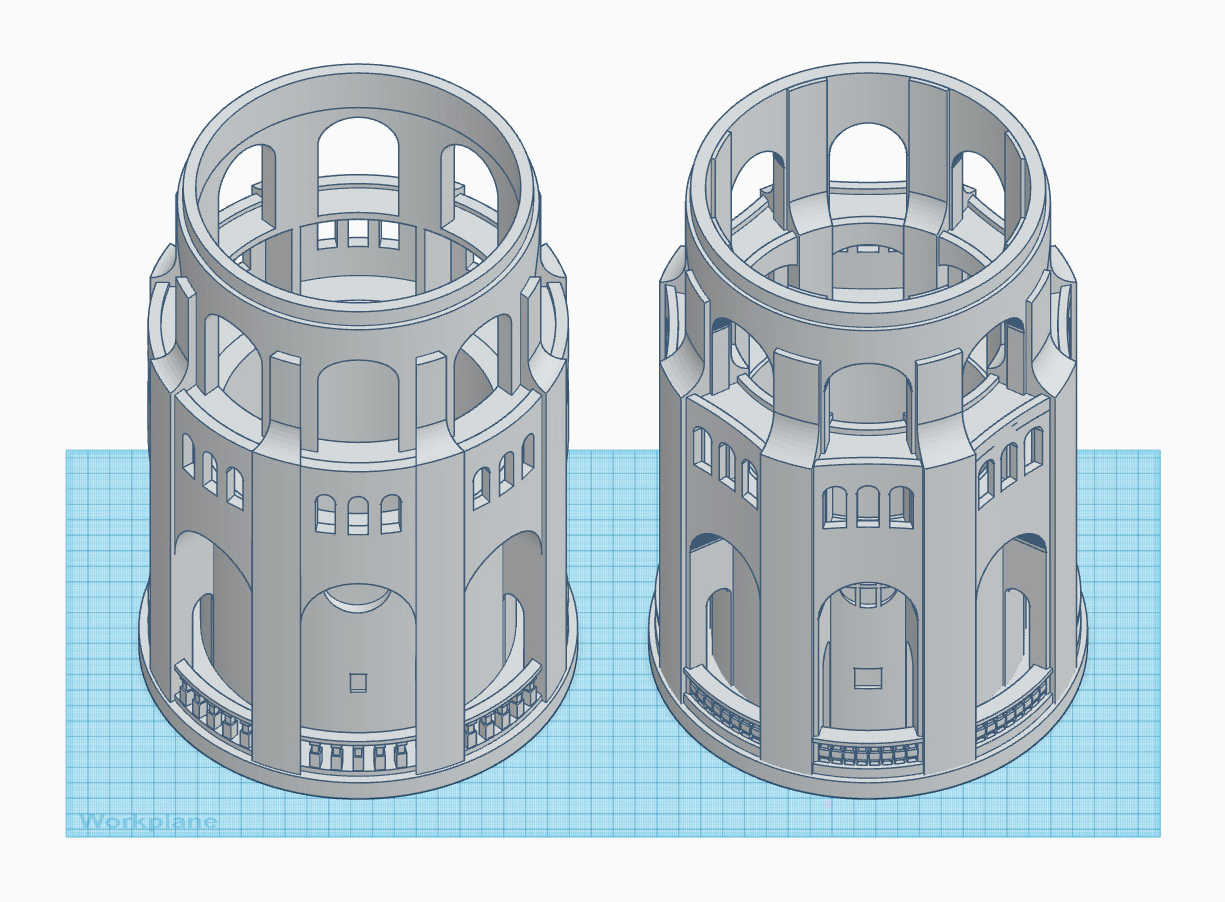
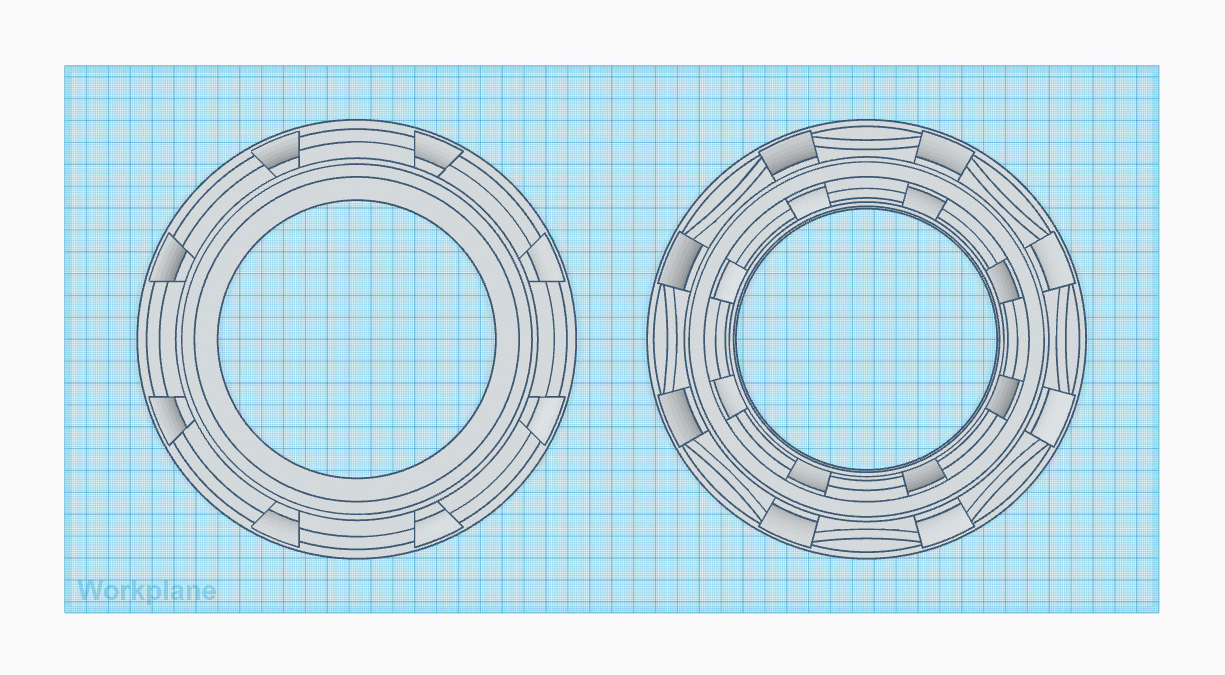
V1 vs V2. V2 was completely redesigned from scratch to be more realistic and to be suitable for large prints. ;)
Another interesting observation to make, and something that is not possible to know without blueprints (or unless you really study the design), is that everything “originates from the center” – like slices of a pie. Once decompiled, these design elements are quite basic in their initial geometric shape. It's as if the creator was using Tinkercad to design it… a work of a true design genius!
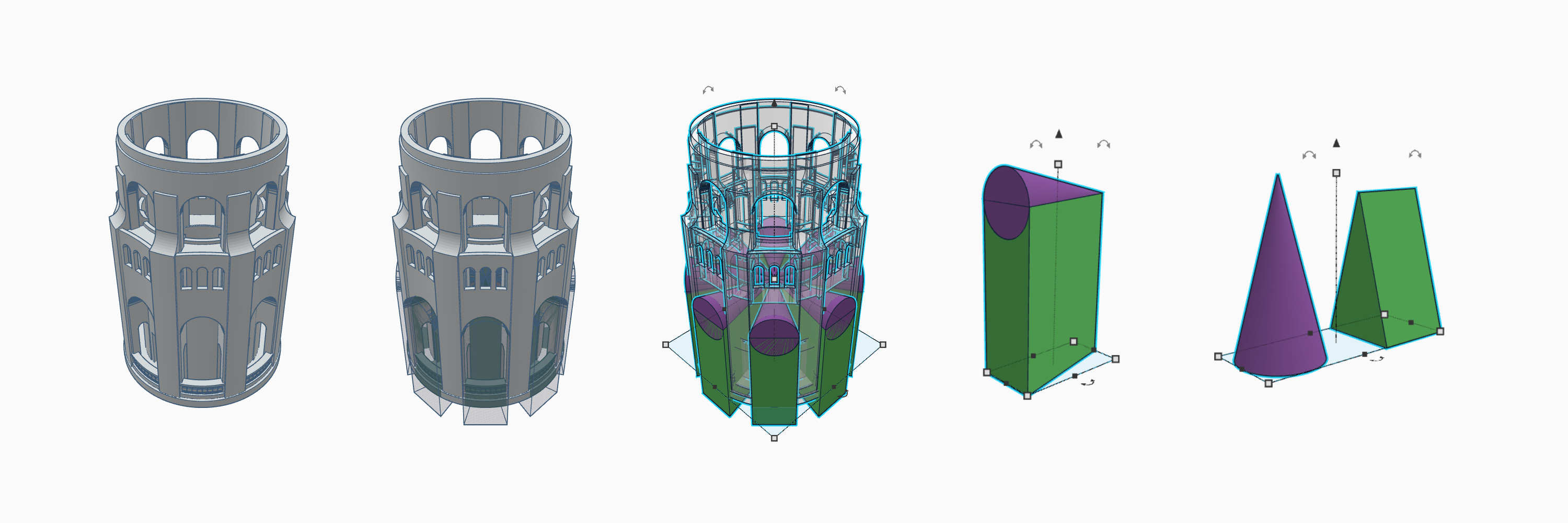
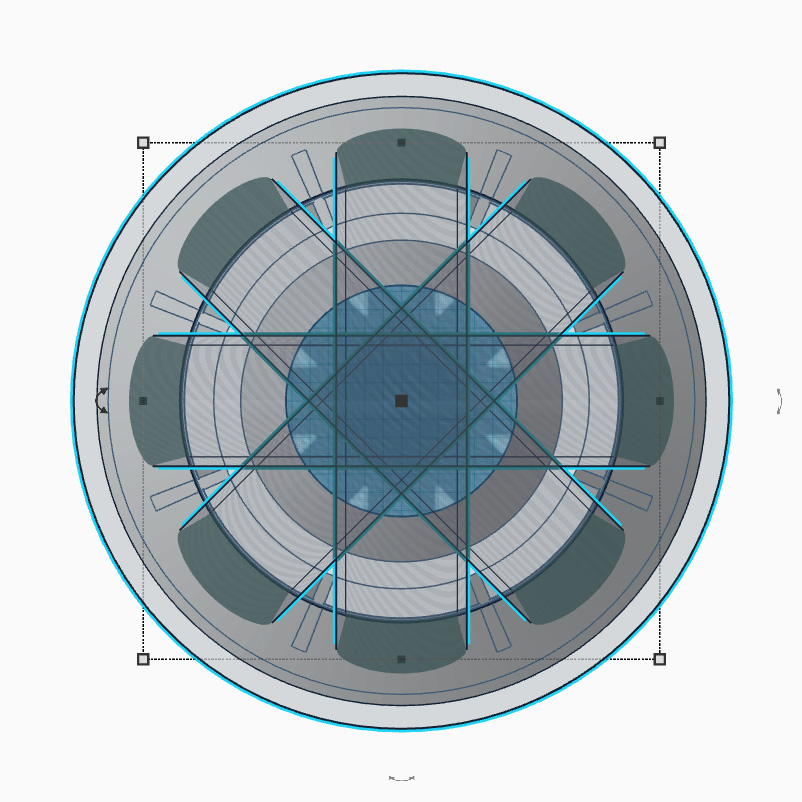
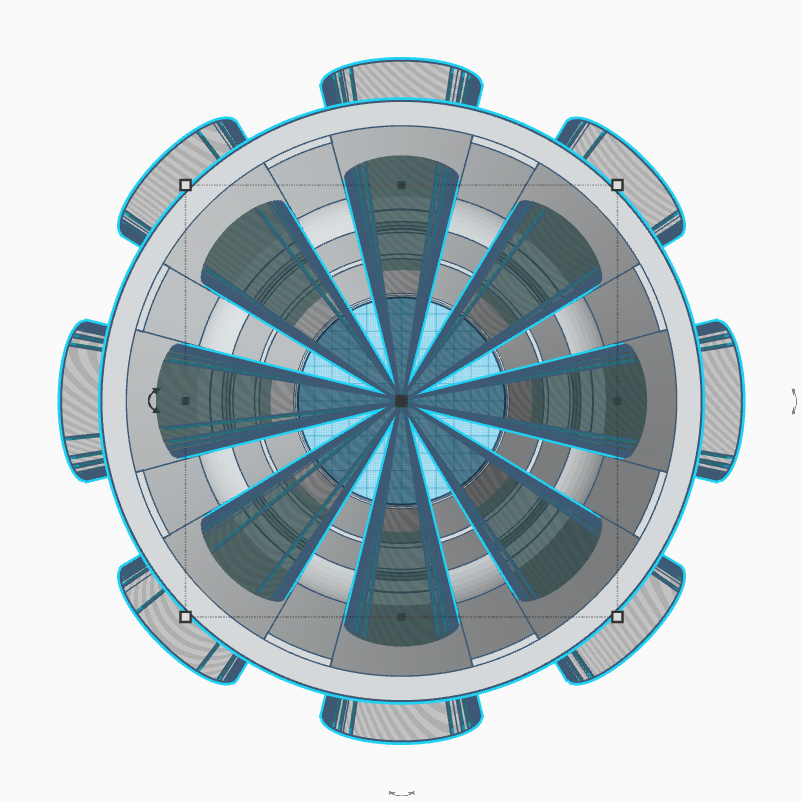
The difference between my initial design thinking, vs architect's. I do prefer the V2. :)
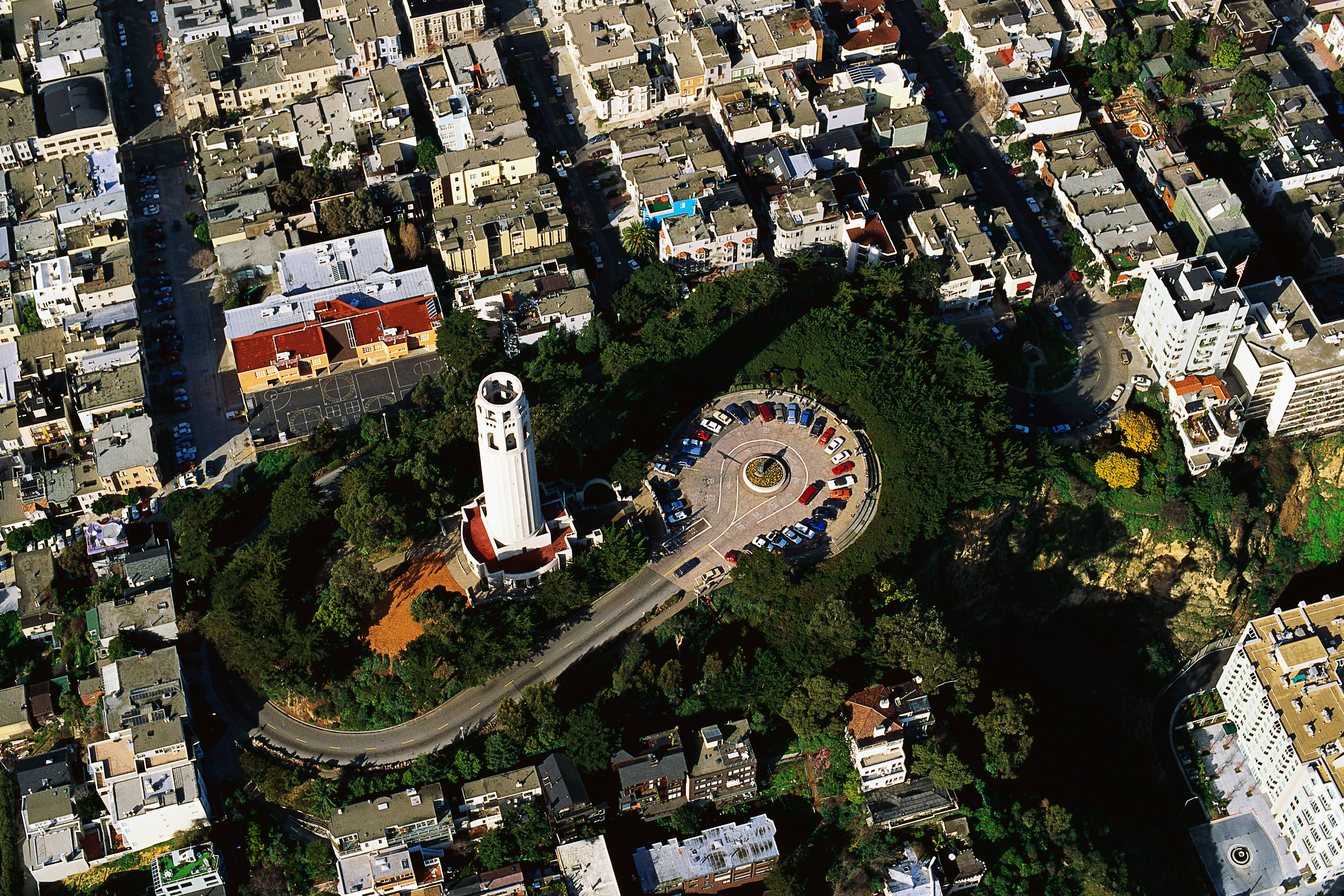
The public park on Telegraph Hill where Coit Tower was built, once called Pioneer Park, was an observation and signaling station in 1849, and was dedicated to the city in 1876 as open space. A narrow two lane paved road curls around the hill in the residential neighborhood and arrives at the top of the hill at the parking circle. The parking area is bounded by a sidewalk and a low wall that divides the public area from the landscaped slope down. In the center of the parking area is a 1957 statue of Christopher Columbus surrounded by a marble wall and concrete walkway.
The crown consists of 8 columns, 'single groove' in width each, that are joined by archways which are equal to the width of 'two grooves'.
The reason why I keep bring up the 'grooves', is because majority of artists who recreate the tower via any graphical or physical means, seem to get this glaring detail completely wrong.
Regardless, these columns are perhaps the most complex pieces of geometry in this particular design, and are true mind-benders indeed! Very cool to be able to visualize things without walls…
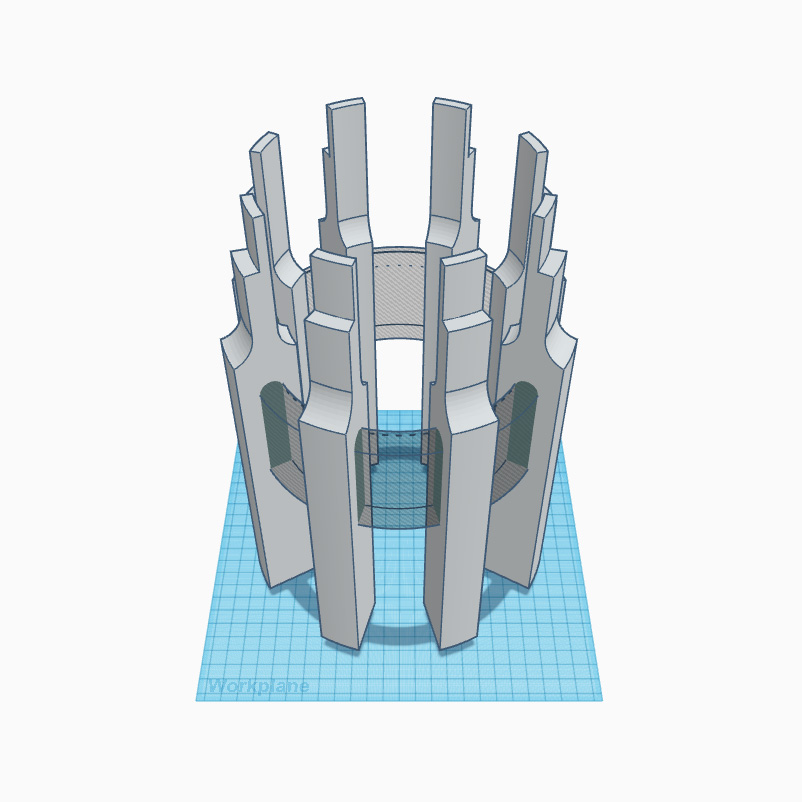
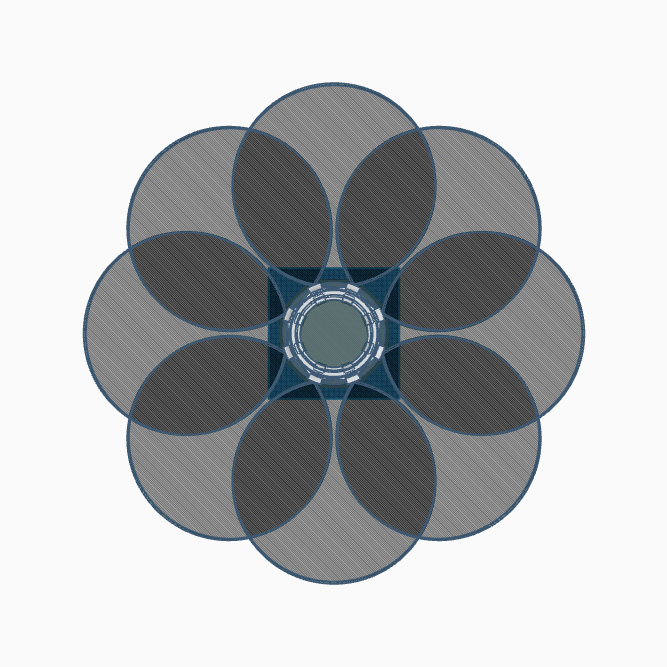
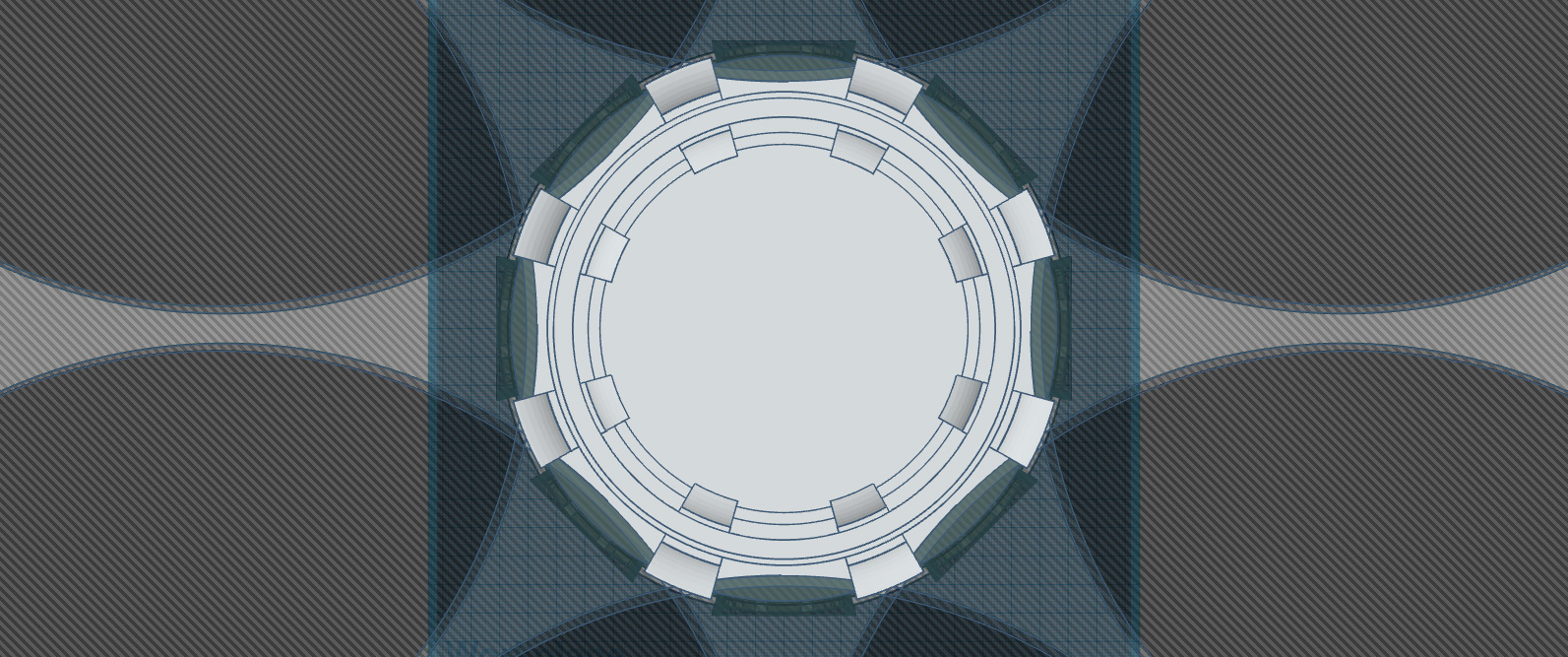
Atop of this arched structure sits an observatory, 55m (180') above the ground. This observatory has two main levels: main being the “Belvedere” (one with the railing), and the observation deck , or the “Lantern Level”.
The Lantern Level consists of 8 [reverse] rounded window wall panels (a detail that many artists also get wrong), featuring 3 small-sized, arch-shaped windows per panel, with 24 in total.
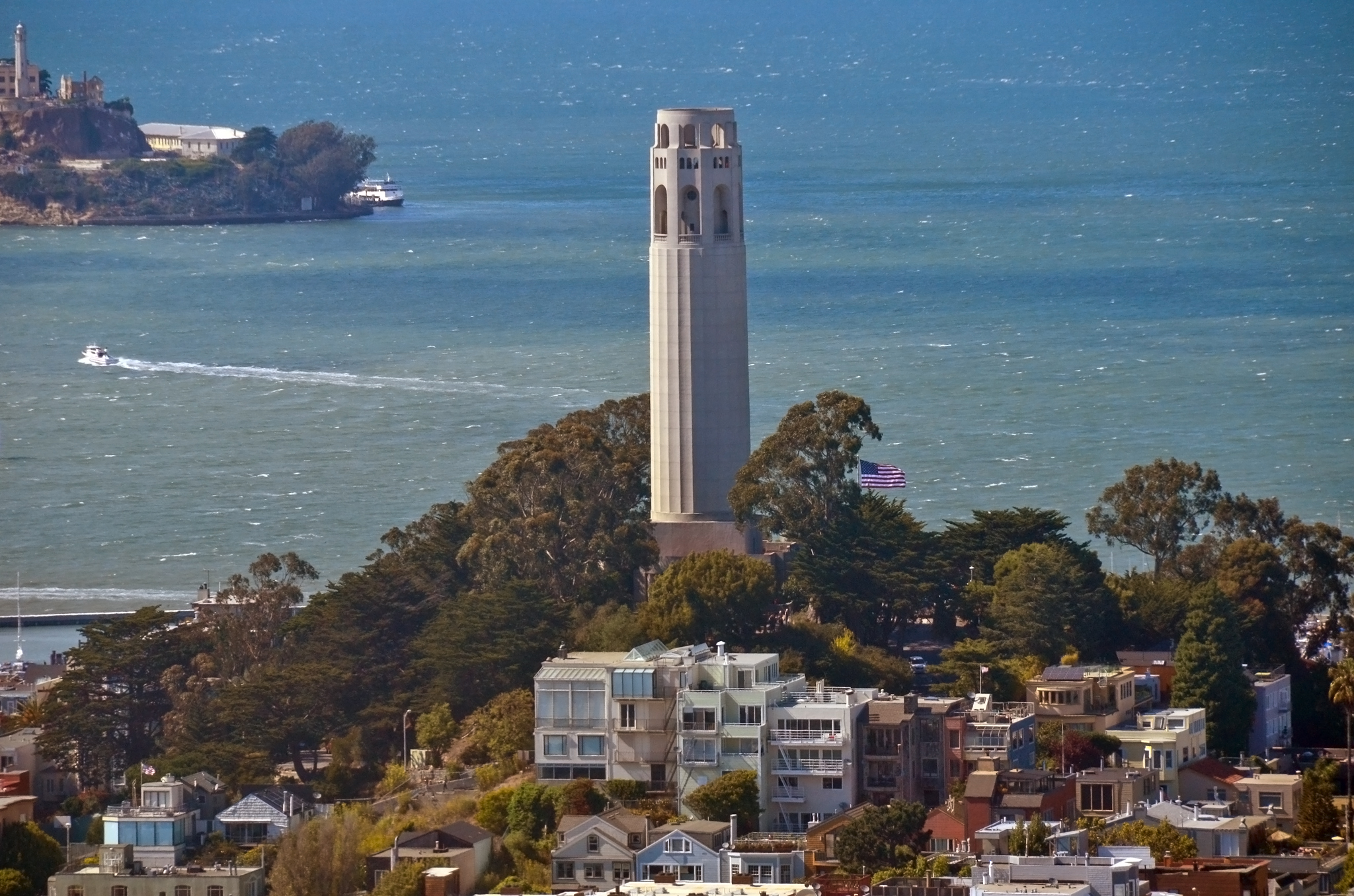
Perhaps one of the most unique features of Coit Tower is yet to come…
There aren't many towers in the bay, or even the world that feature a similar open-top design; so to finish it off, the architect created exactly that – an arcade featuring a giant skylight. “No roof…”
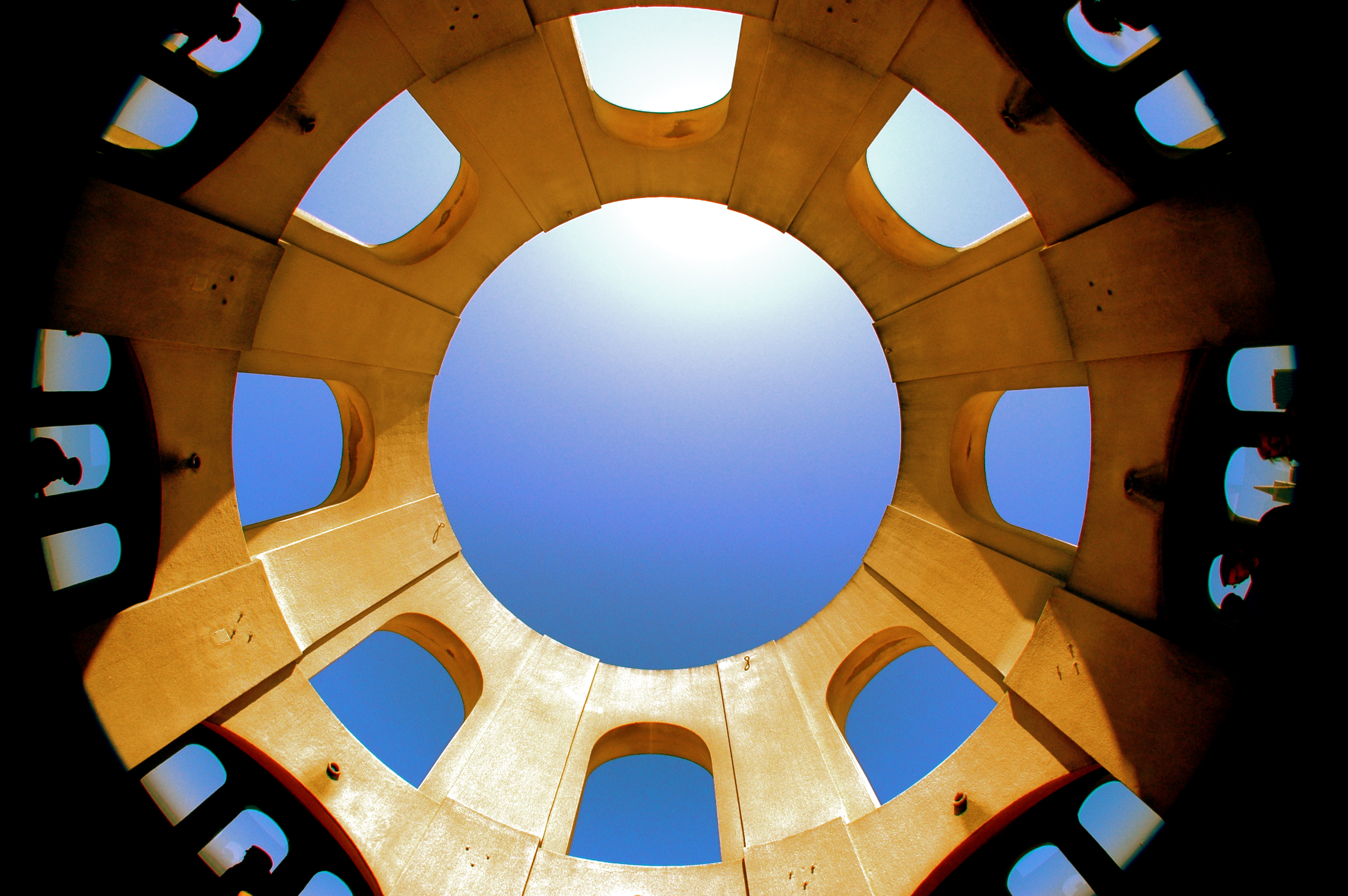
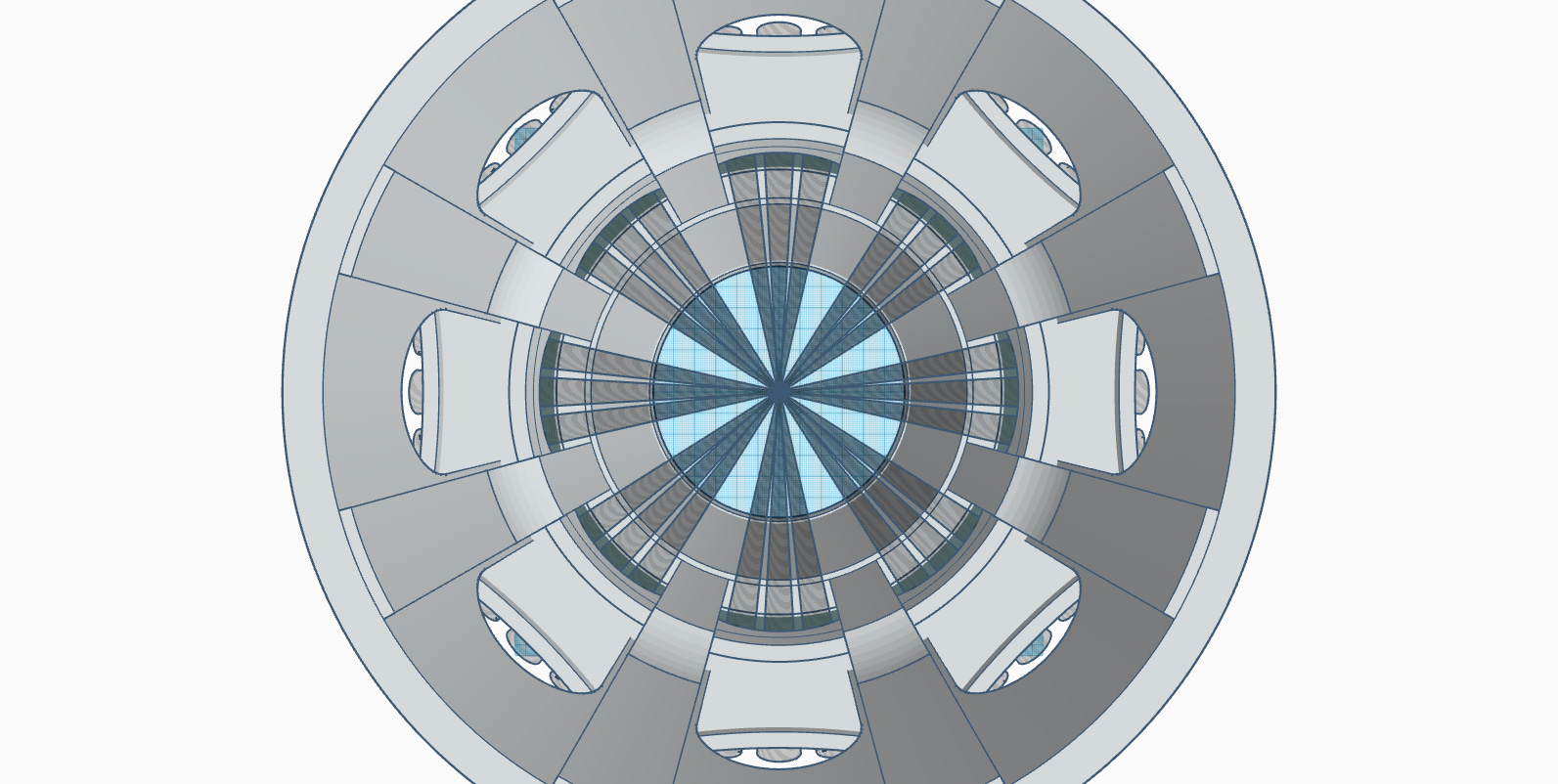
About V1 scale model:
- Seen in this article is an approximately HO scale model (1/87). This is a beta model, lots was improved/redesigned in v2.
- This beta belongs to a limited edition collection. Only 5 of such models will be built by me personally, with 2 out of 5 already reserved.
- Model featured in this article has been 3D printed thousands of times by architecture enthusiasts and designers alike, and has been viewed by the worldwide audience of hundreds of thousands of users since its creation.
- It is 3D designed in Tinkercad – a completely free online 3D design, electronics, and 3D printing app from Autodesk, which, at one point, I've helped to design and grow from 50k users to 13M+ (in less than 3 years).
- Over 50 photos and videos were used to ensure accuracy and a fantastic drone video footage captured by Bruce Halperin. A big "thank you!" goes out to all the contributing photographers and parties involved in documentation of the tower.
- Designed to be 3D printed on MakerBot Z18 and re-designed to be printed on a Replicator 2.
- Total build time: 2 weeks.
- Contains 3 live plants.
- Total weight: 7lbs (including dirt).
- Miniature people depict the many and varied scenes which define the vibrant city of San Francisco.
- Option to be self-watering up to 3 weeks.
- Option to include lights:
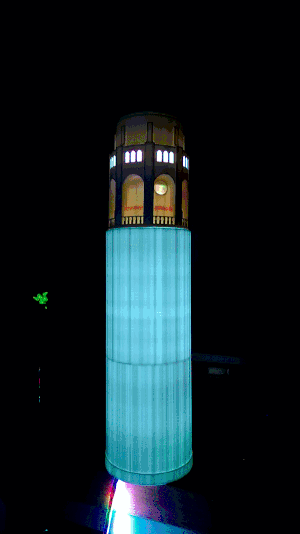
Find it on Thingiverse ![]() Tinker this...
Tinker this...
Interesting facts about Coit Tower:
- The height of the tower was raised 43' 6" during construction.
- The exterior of Coit Tower is in generally good condition due to the major restoration project that was completed in 1988.
- The building was built by Young and Horstmeyer at a total cost of $124,605, including landscape and architects fees (1933).
- According to Arend Horstmeyer, of the construction company Young and Horstmeyer, the concrete was poured in the four foot form work each day. Before each pour, the edge of the form work at each flute had to be shaved off in order to produce a tower with a top 18" in diameter smaller than its base.
- Lillie Coit's bequest was almost used toward the construction of a roadway around Lake Merced. A "Coit Advisory Committee" was created "for the expenditure of the bequest of the late Lillie Hitchcock Coit" within the city's Board of Supervisors. Herbert Fleishhacker, both member of the Board of Supervisors and President of the Board of Park Commissioners, requested to "make funds available from the Coit Bequest for the construction of a memorial for the beautification of Telegraph Hill." After Arthur Brown Jr. had won the Coit Memorial competition and received the commission as architect, it was then Fleishhacker who expeditiously sought bids from contractors and dispelled objections over design by pushing through the contract for construction.
- Significant persons are also associated with the design of the Tower. Various schemes from prominent artists were presented to the Art Commission for their competition for a memorial on Telegraph Hill. The winner was the proposal by the prominent architect Arthur Brown, Jr. (graduate from the Ecole de Beaux Arts in Paris and designer of San Francisco's City Hall and War Memorial Opera House in Civic Center). Henry T. Howard, son of famed architect John Galen Howard, was the project architect.
- Coit Tower architect Arthur Brown, Jr., commissioned sculptor Robert B. Howard (1896-1983) (brother of Henry T. Howard) to create a cast stone high relief plaque four feet in diameter of the phoenix bird (symbol of San Francisco's many "rebirths" after several widespread fires) to adorn the Tower's entrance.
- Coit Tower embodies the distinctive characteristics of reinforced concrete shaped from form work. Technology in reinforced concrete construction was still at an experimental stage only twenty years before Coit Tower and still experiments were being made at the time Coit Tower was built. Few 181 foot structures of reinforced concrete had been constructed by that time in the United States. According to Arend Horstmeyer, of the construction company Young and Horstmeyer, the concrete was poured in the four foot form work each day. Before each pour, the edge of the form work at each flute had to be shaved off in order to produce a tower with a top 18" in diameter smaller than its base. It took 350,000 board feet of lumber just to build the scaffolding that surrounded it. Coit Tower also represents work of a master, Arthur Brown Jr. Although the project architect was Henry T. Howard, and much of the work was executed by John A. Baur, it is noted that it was Brown who designed its concept, shape, and proportions.
- Arthur Brown, Jr. is one of San Francisco's primary architects due to his design of the neoclassical City Hall and War Memorial Opera house, two of the most prominent buildings in the city. Coit Tower, because of its unique design and use of reinforced concrete, and its strategic placement on Telegraph Hill, possesses high artistic value.
- The wood constructed Pioneer Park Observatory was destroyed in a fire in the late 1800's, with only the concrete porch steps and balustrade remaining. Therefore, since two observatories were once on the site, it was natural to construct an observation tower on the site. According to the designer, Henry T. Howard: "Telegraph Hill has always been used as a vantage point, either for signaling or for gaining a panoramic view. Why not emphasize this idea in the form of the memorial?"
- Coit Tower is associated with events that have made significant contributions to the broad patterns of our history in the category of communications. In a time before the telephone or television, the inner signal station on Telegraph hill, a primitive way of communicating by our standards, was necessary for the basic communication to the community who were very anxious to hear about any ship vessel that may bring friends and family, news from the east, and their mail. This inner signal station, built in 1849 by George Sweeny and Theodore Baugh, founders of the Merchants' Exchange, was a small 18 by 25 foot two story house as an observation post, and a semaphore system on its roof. This station served the community until an electric telegraph system was invented in 1853. It was the community's love and appreciation for the telegraph station that motivated them to purchase the property in 1876, name it Pioneer Park, and donate it to the city to insure the preservation of the station as a landmark.
- Telegraph Hill, the site of Coit Tower, is historically significant because of its historic contribution to the broad patterns of our history and specifically in the area of communications of San Francisco. Called "Loma Alta" (High Hill) by the early Spanish inhabitants, the hill was used in the early 1800's as a quarry for ship ballast and street paving.
- This structure of monumental stature embodies the distinctive characteristics of the Art Deco style with its exterior fluted shaft of textured concrete, its system of arches at the top, simple interlocking volumes at the base, its thin metal casement windows, and its sculptural exterior and interior light fixtures. However, its uniqueness and exceptional design was not always appreciated. During construction, local artists appealed to the Art Commission to halt construction, arguing on aesthetic grounds that the tower was too tall for the hill, and a mockery of trying to imitate a fire hose nozzle, in memory of Lillie Coit's fondness of the fire department. The architects denied such an intention, and construction continued. In 1933, Henry Howard explained their design intent in an article in Architect and Engineer: The tower has no prototype. It is not a medieval deep to resist capture, nor a lighthouse to warn off mariners. Neither is it a clock tower nor a fanciful ebullition for a exposition. It is intended to be dignified with austerity; monumental without utilitarian function.
- Nowhere is there a building quite like Coit Tower.
Do read the wiki and this; both contain a lot of interesting info on the tower.
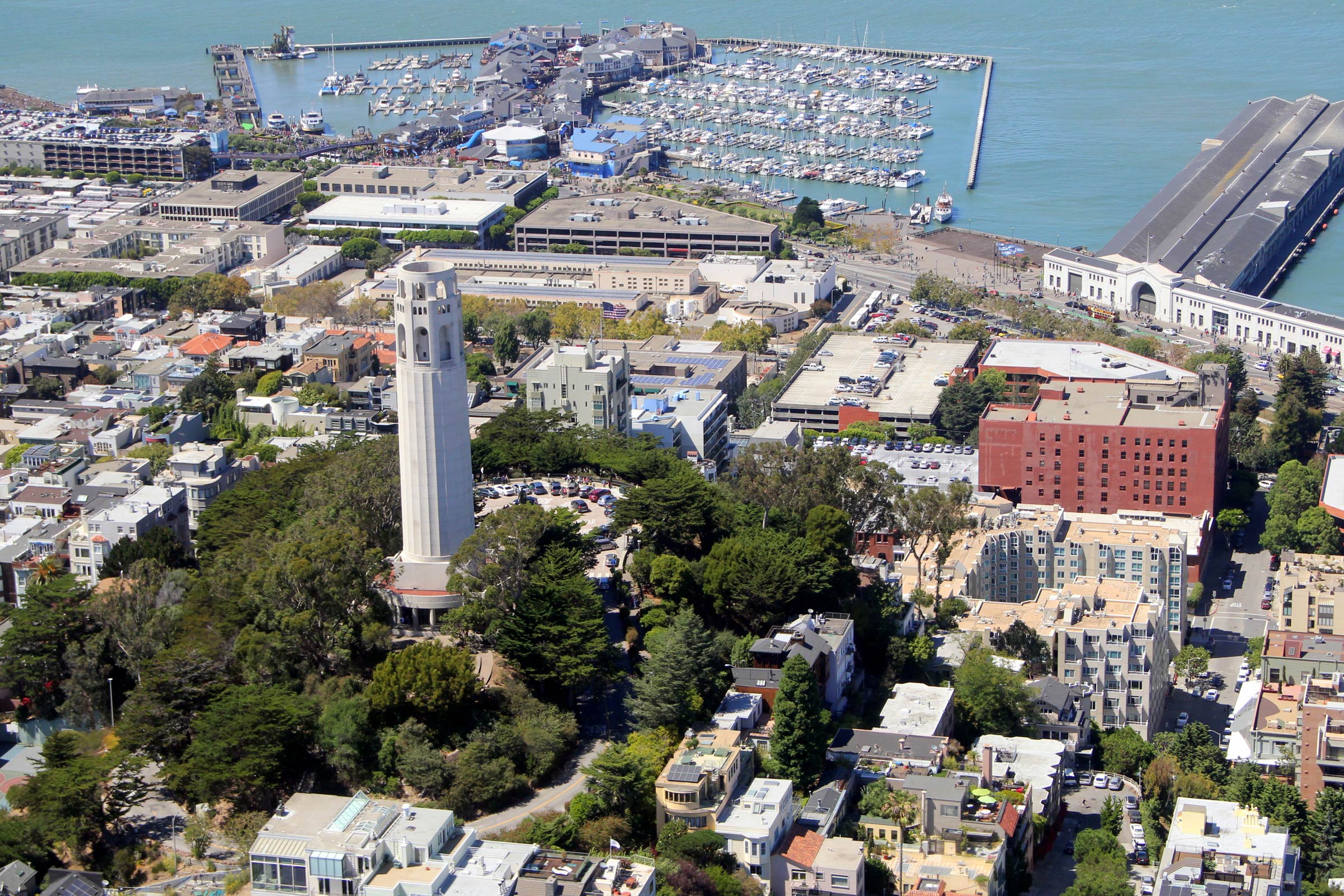
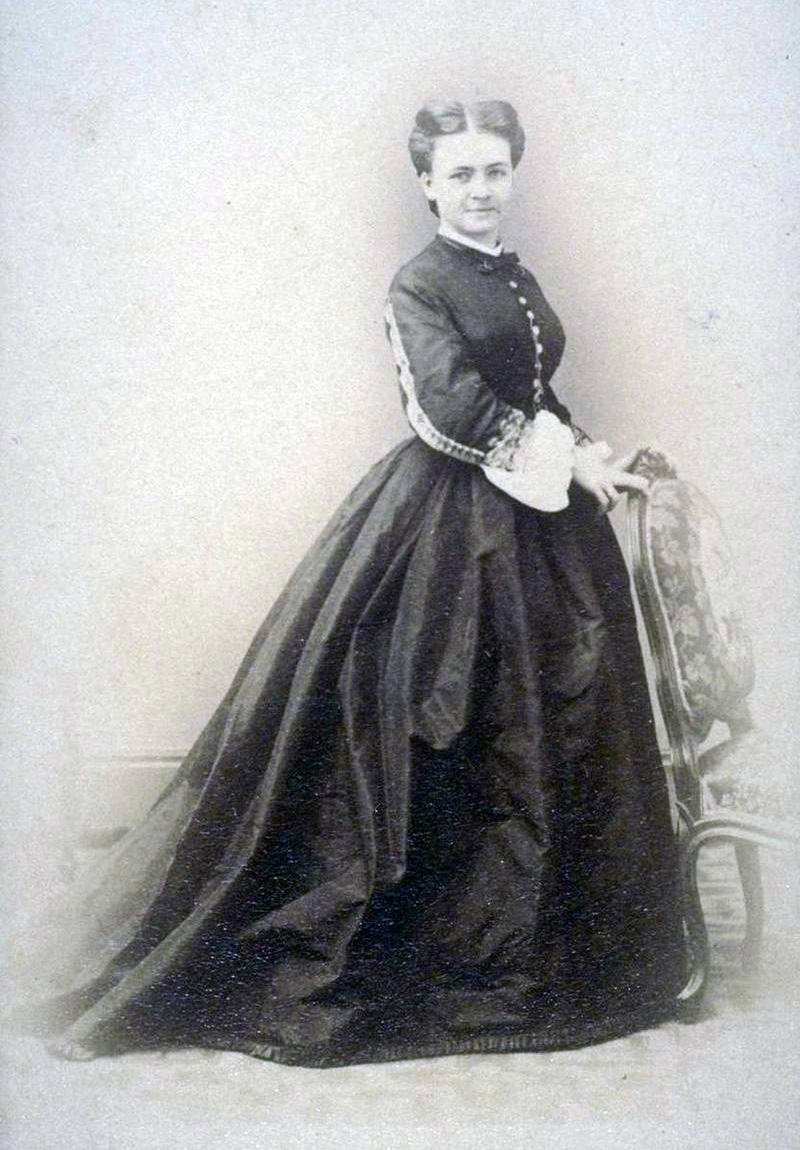
Thanks, Lillie!